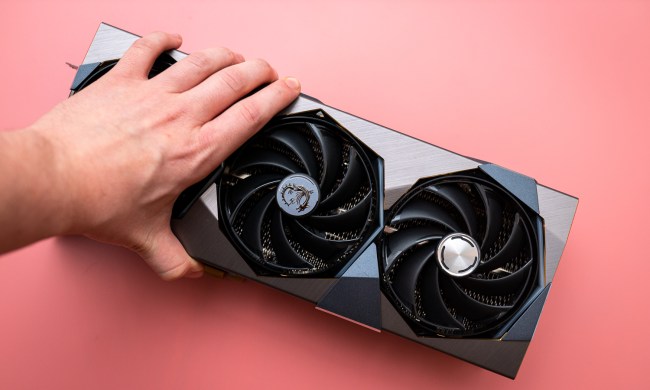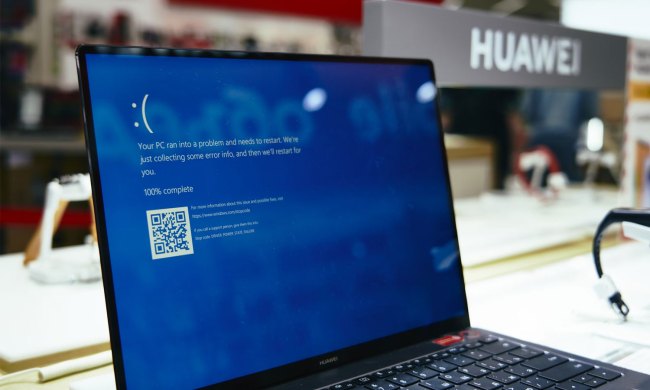“This mobile solution not only removes the bulk of connecting to the large, traditional computer towers of old, but also allows the user to roam freely in VR with their undivided attention,” the company says. “This innovative solution includes a system powerful enough to drive VR, and a portable battery pack to keep you going.”
What a tease.
The video is likely based on Zotac’s upcoming VR-ready Magnus EN980 Zbox mini-PC. As previously reported, the device is expected to launch this summer as a bare-bones solution, meaning customers will be required to invest in memory, storage, and an operating system on top of the EN980’s pricetag, which may or may not be between $1,500 and $2,000.
Yes, that’s quite expensive for a mini-PC. But it will reportedly pack an Intel Core i5-6400 processor, a Nvidia GeForce GTX 980 notebook graphics chip, and a number of connectors spanning USB 3.1, USB 3.0, DisplayPort, HDMI, and Ethernet. Even an SD card reader will be crammed into its small 9-by-8-by-5-inch form factor.
In addition to those specs, the unit will also sport a liquid cooling system that includes a 120 mm radiator, a fan, liquid channels, heat pipes, and heat fins, keeping the VR-ready device quietly chilled. Other hardware features include two empty slots for the memory, a 2.5-inch bay for a solid state drive or hard drive, and an M.2 slot for additional storage.
“Magnus EN980 packs the full power of a premium desktop gaming solution into a ZBOX Mini PC,” Zotac boasts. “The result is the most powerful Zbox, and goes beyond the recommended specifications for VR experience.”
What’s interesting about the mobile VR Zbox setup shown in the new video is that the mini-PC is not tethered to a wall’s electrical outlet; not even with an extremely long extension cord. The battery stuffed into that backpack has to be big enough to support not only the Zbox, but the HTC Vive and its controllers. How long this battery will last is anyone’s guess at the moment.
In taking a peek at Zotac’s website, the company currently does not offer a mobile battery for any product that requires an electrical outlet. However, the company does suggest that desktop owners upgrade their desktop’s graphics card to the Zotac GeForce GTX 980 Ti for the best possible graphics performance for the HTC Vive headset. Zotac seems to be a big fan of this particular VR solution.
Zotac said it demonstrated the new VR-ready Zbox during Cebit 2016 and GDC 2016, and is expected to showcase the device during Computex in June. Maybe then, we’ll get a detailed list of specs, pricing, a street date, and what kind of portable battery the company is using in its cool mobile VR setup. Until then, check out the video and bask in the greatness of portable VR action with the HTC Vive.



